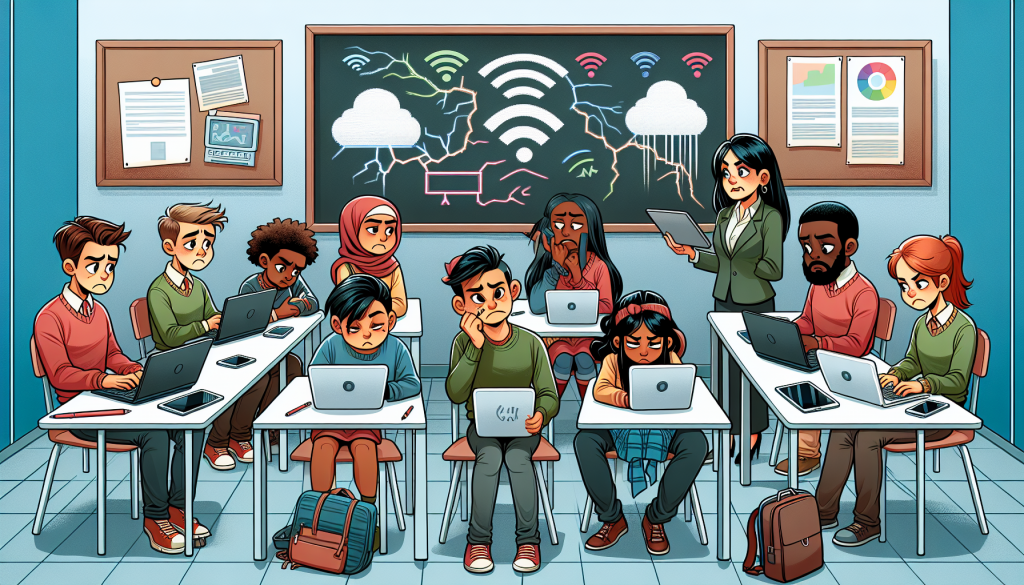In the era of booming digital technology, the integration of technology in education and training plays a pivotal role in enhancing the quality of education, providing learners with effective learning experiences, and unlocking doors to a future of creative learning.
This report will discuss the benefits, challenges, and potential solutions for the application of technology in education, while also proposing some positive trends in this field. Let’s delve into this together with Tinasoft.

Benefits of Integrating Technology in Education
- Enhancing Learning Effectiveness: According to a study by the International Society for Technology in Education (ISTE), using technology in the classroom can improve student test scores by an average of 17%. Another study by the University of California, Irvine, found that students using ebooks can read 30% faster and comprehend 17% better than students using paper books.
- Boosting Engagement and Interaction: Technology-based teaching tools and methods such as gamification, project-based learning, and blended learning effectively capture students’ attention, encourage active participation, and promote critical thinking. According to a Pew Research Center survey, 90% of students reported enjoying learning more when technology was used in the classroom.
- Expanding Access to Education: Online learning platforms like Coursera, edX, and Khan Academy provide high-quality education to everyone, regardless of geographical location or socioeconomic background. According to UNESCO, the use of technology in education has helped reduce the global illiteracy rate to 14% in 2020, from 43% in 1970.
- Preparing Students for the Future: Technology skills such as computer usage, programming, critical thinking, and problem-solving are essential skills for the modern workforce. Integrating technology into education equips students with the skills necessary to succeed in the future.

Challenges
- Infrastructure and Resource Deficiencies: According to the International Bureau of Education (IBE), 15% of students worldwide did not have access to the internet at school in 2021. The lack of computers, tablets, and other technology devices is also a problem in many schools, especially in rural and underdeveloped areas.
- Digital Skills of Teachers: An OECD survey found that 42% of teachers reported not feeling confident using technology in teaching. The lack of training and support for teachers in using technology effectively is a major barrier to the adoption of technology in education.
- Digital Divide: Unequal access to and use of technology can lead to a digital divide between students in different regions, affecting their educational quality and learning opportunities. According to UNESCO, 1 billion children worldwide did not have access to the internet at home in 2021.
- Data Management and Security: Student data must be managed and secured carefully to prevent information leaks and privacy breaches. Appropriate policies and procedures are needed to protect student data and ensure responsible data use.

Potential Solutions
- Invest in Infrastructure and Resources: Governments and educational organizations need to invest in providing internet, computers, and other technology devices to schools.
- Teacher Training: There is a need for teacher training programs to help them effectively use new educational technologies.
- Minimize the Digital Divide: Support programs are needed to ensure that all students can access and use technology in education.
- Ensure Data Management and Security: Appropriate policies and procedures are needed to protect student data.
Positive trends of technology in education
- Online Learning: Online learning is becoming increasingly popular, providing students with flexibility and the ability to access education from anywhere. Online learning platforms like Coursera, edX, and Khan Academy offer a wide range of high-quality online courses on various subjects. The COVID-19 pandemic has accelerated the development of online learning and demonstrated its potential to provide education to everyone, regardless of geographical location or background.
- Artificial Intelligence (AI): AI can be used to personalize learning, provide feedback to students, and support teachers in assessment. For example, AI systems can be used to create individualized learning plans tailored to each student’s needs, track student progress, and provide real-time feedback. AI can also be used to automate tedious tasks such as grading assignments and creating quizzes, freeing up teachers’ time to focus on teaching and supporting students.
- Virtual Reality (VR) and Augmented Reality (AR): VR and AR can be used to create realistic and engaging learning experiences. For instance, students can use VR to visit historical sites or conduct science experiments in a simulated environment. AR can be used to overlay digital information onto the real world, helping students learn about complex scientific concepts or explore different cultures.pen_spark
- Gamification: Gamification is the use of game elements in education to increase student engagement and engagement. For example, educational games can be used to teach students about topics ranging from math and science to history and languages. Gamification can help students learn more effectively and make learning more fun.

Conclude:
Integrating technology in education and training benefits students, teachers, and the education system in general. Addressing challenges and leveraging potential solutions will help us open the door to a future of effective, creative, and inclusive learning. Follow Tinasoft to update many interesting news.




0 Comments